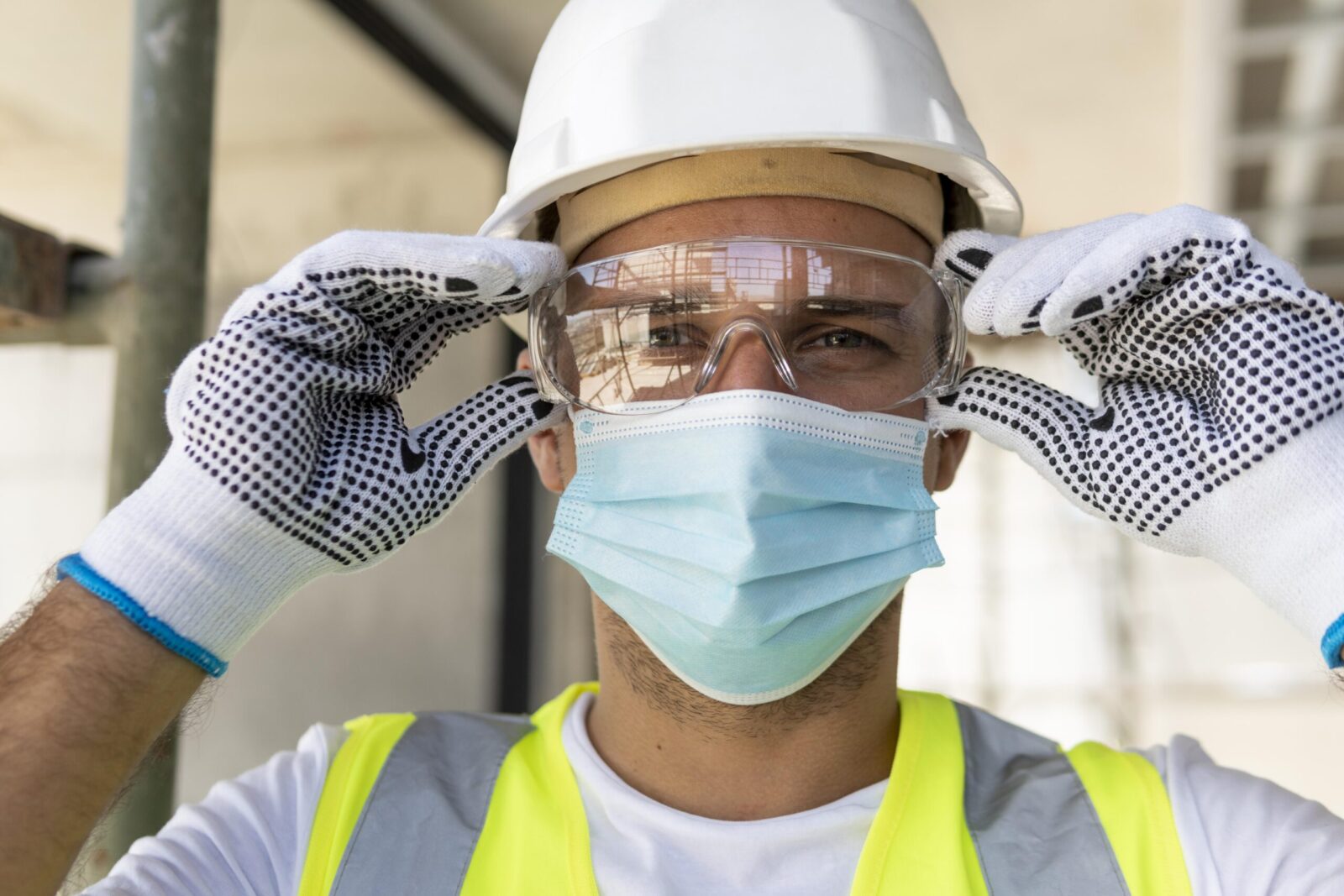
Essential PPE in the Food Industry: What You Need to Know
Overwhelmed by PPE options for food safety? Master your PPE selection for food workers safety with these practical tips.

Get 20€ off on your first order!
When choosing the right rain pants, understanding the difference between waterproof and water-resistant materials is crucial.
Are you facing the challenge of finding rain pants that balance protection and comfort for your work or outdoor needs? By the end of this guide, you will not only understand these ratings but also feel confident in making the best choice for your situation.
With our expertise in heavy-duty workwear, we ensure you’re equipped for all conditions and we’ll even help you tackle the next challenge of maintaining your rain gear to extend its performance.
For a comprehensive overview of selecting rain pants, check out How To Choose The Right Rain Pants: Everything You Need To Know.
Before diving into technical details, it’s essential to define what these terms mean in practical use. Waterproof rain pants are designed to completely block water from penetrating the fabric, even under prolonged exposure to rain.
Water-resistant pants, on the other hand, provide a lower level of protection, repelling water to a degree but not guaranteeing dryness in heavy downpours.
Understanding these terms can guide your choice based on your work environment. For example, Waterproof options provide dependable protection during prolonged exposure to rain. For milder conditions, water-resistant rain trousers might suffice.
The waterproof rating of rain pants is determined by the hydrostatic head test, which measures how much water pressure the material can withstand before leaking. This is typically expressed in millimeters (mm). Common ratings include:
| Rating (mm) | Performance |
| 0-1,500 mm | Water-resistant, light rain |
| 1,500-5,000 mm | Waterproof, moderate rain |
| 5,000-10,000 mm | Highly waterproof, heavy rain |
| 10,000+ mm | Extreme waterproofing |
For workwear, opt for rain pants with a rating of at least 5,000 mm to withstand demanding conditions.
Additionally, in Europe, waterproof clothing must comply with the EN 343 standard, which specifies requirements for protective clothing against rain, including water penetration resistance, breathability, and durability.
Look for pants that meet EN 343:2019 standards for optimal performance. Learn more about EN Standards from this guide in Wikipedia.
When evaluating waterproof rain pants, consider these factors:
Waterproof rain pants like those available in our Rain Pants category meet these criteria, combining functionality and resilience for professional use.

Water-resistant pants are treated with a durable water repellent (DWR) finish, which causes water to bead up and roll off.
However, they are not built to handle prolonged exposure or heavy rain. Their benefits include:
In heavy-duty settings, these may not provide the same level of comfort and performance as waterproof options. Explore work pants if your job involves a mix of light and heavy outdoor activities.
Deciding between waterproof and water-resistant rain trousers depends on several factors:
Here are specific scenarios to help guide your choice:
Pair your rain pants with other suitable outerwear to ensure maximum protection and comfort. For instance, a durable jacket from our Work Jackets category complements rain pants perfectly for a complete weather-resistant outfit.
Proper care extends the life of your rain pants:
Maintaining your gear ensures it performs well in any condition. For colder climates, explore Winter Work Pants designed for insulation and weather protection.
| Feature | Waterproof Pants | Water-Resistant Pants |
| Protection | Complete | Limited |
| Breathability | Moderate (depends on fabric) | High |
| Durability | High | Moderate |
| Cost | Higher | Lower |
| Best Use | Heavy rain, harsh conditions | Light rain, short exposures |
This table simplifies the decision-making process, helping you find the best fit for your needs.
For additional insights, explore these articles:
These guides provide practical advice for selecting the best workwear for your needs.
We hope this guide has provided clarity on the key differences between waterproof and water-resistant rain pants, helping you select the best option for your work environment and weather conditions. From navigating harsh downpours to staying comfortable in lighter rain, we’re here to support your choices every step of the way.
Explore our Rain Pants collection to find reliable, high-quality options tailored to your needs. For additional heavy-duty gear, browse categories like Work Pants and Winter Work Pants.
Have questions or need personalized advice? Don’t hesitate to reach out—we’re always here to ensure your comfort, safety, and satisfaction in every purchase.
Thank you! You've signed up for our newsletter.



















Overwhelmed by PPE options for food safety? Master your PPE selection for food workers safety with these practical tips.

Struggling to maintain clear vision in demanding environments? This guide is here to help. By the end, you’ll know exactly...

Electricians across Europe face unique challenges that require reliable safety glasses to ensure both protection and efficiency. Whether safeguarding against...

Overwhelmed by PPE options for food safety? Master your PPE selection for food workers safety with these practical tips.

Struggling to maintain clear vision in demanding environments? This guide is here to help. By the end, you’ll know exactly...

Electricians across Europe face unique challenges that require reliable safety glasses to ensure both protection and efficiency. Whether safeguarding against...
Get 20€ off on your first order!
Save 30% by buying directly from brands, and get an extra 10€ off orders over €100
Save 30% by buying directly form brands, and get an extra 10€ off orders over €100